Lantana camara, planting guide and care work
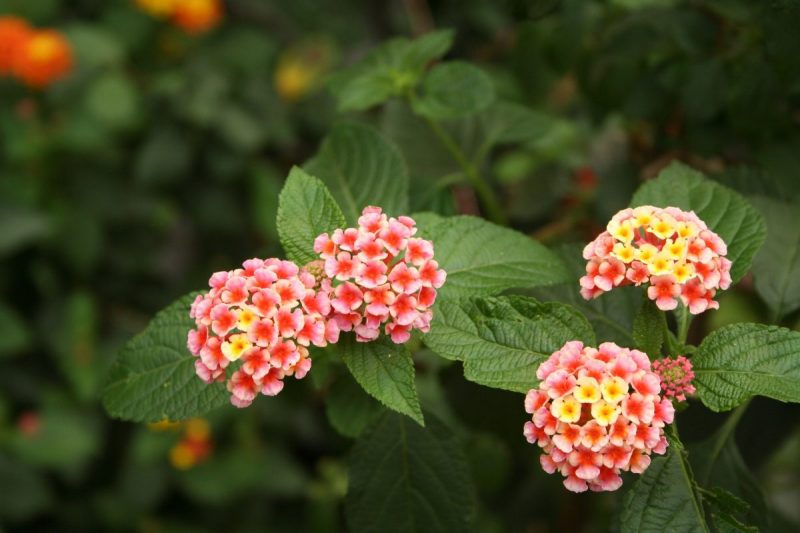
Lantana camara is a decorative shrub with flowers, which is part of the Verbenaceae family, originating from Central and South America. Lantana camara can be grown in gardens and parks only in areas with a warmer climate, while in areas with a cold climate, it is suitable for flowerpots and containers, and can be sheltered indoors during the cold season.
This shrub stands out for its round inflorescences, made up of small, brightly colored flowers. The flowers are tubular, terminally arranged, clustered in bunches. Depending on the variety, the flowers can be yellow, red, white, pink, blue, or purple. The inflorescence can be made up of flowers of the same color or mixed. Due to its vibrant colors, Lantana attracts many pollinators. The leaves are simple, oppositely arranged and have a strong smell when crushed.
Lantana camara – Varieties and cultivars
- ‘Spreading Sunset’: the inflorescence is made up of golden-yellow flowers in the center and orange flowers on the edge;
- ‘Miss Huff’: it stands out through the mix of coral, orange, pink and yellow flowers;
- ‘Silver Mound’: the flowers are white, with a yellow center;
- ‘Weeping Lantana’: the flowers are purple in color, similar to lavender;
- ‘Bandito’: the inflorescence is compact, made up of red, orange or pink flowers.
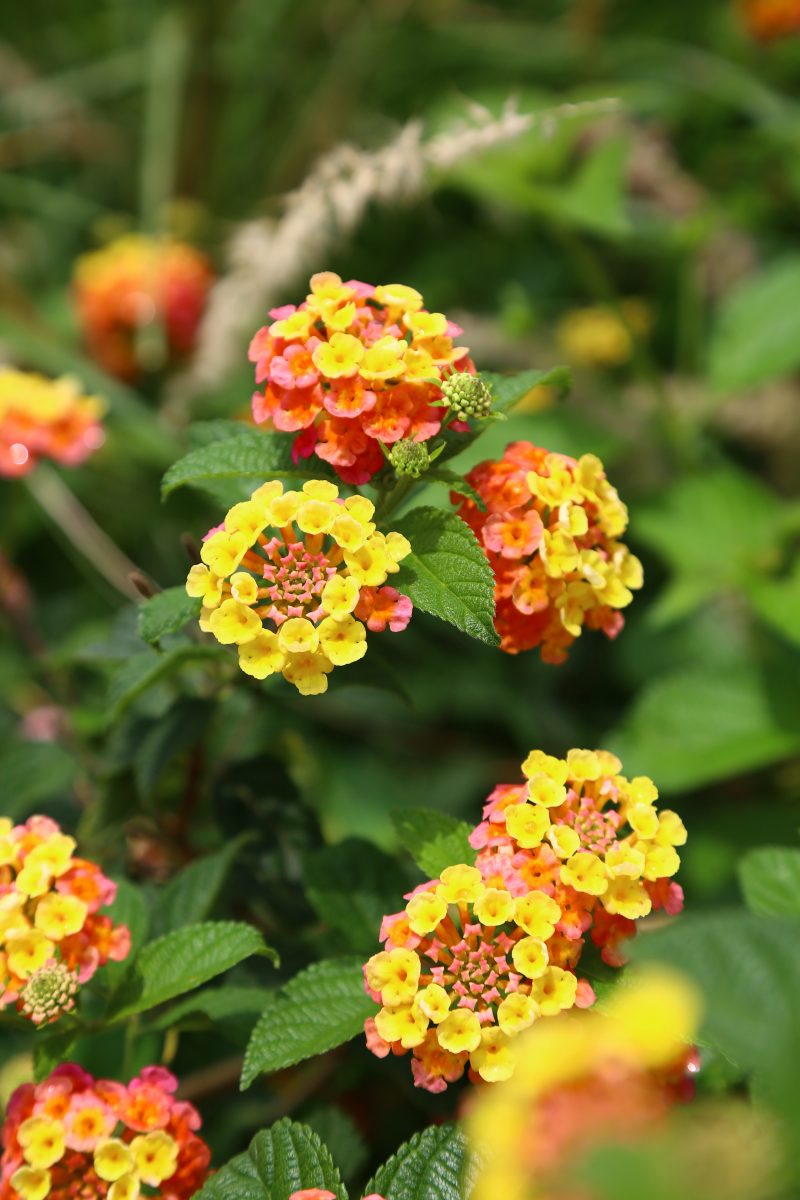
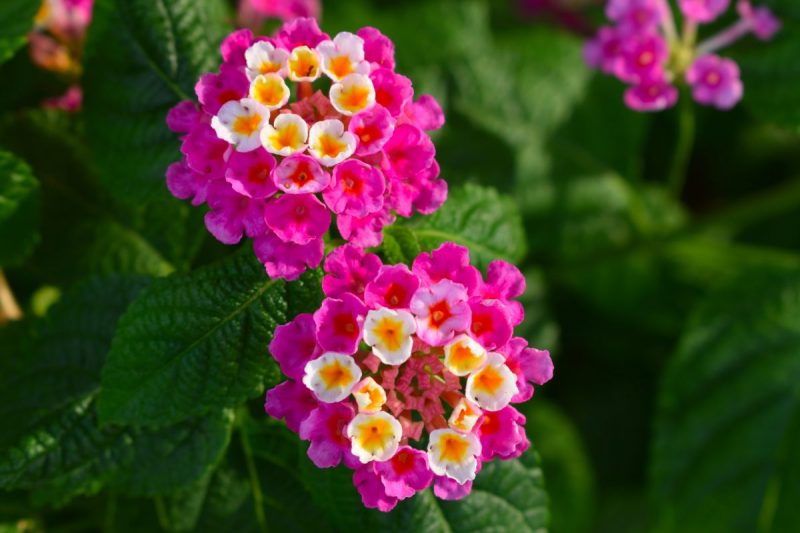
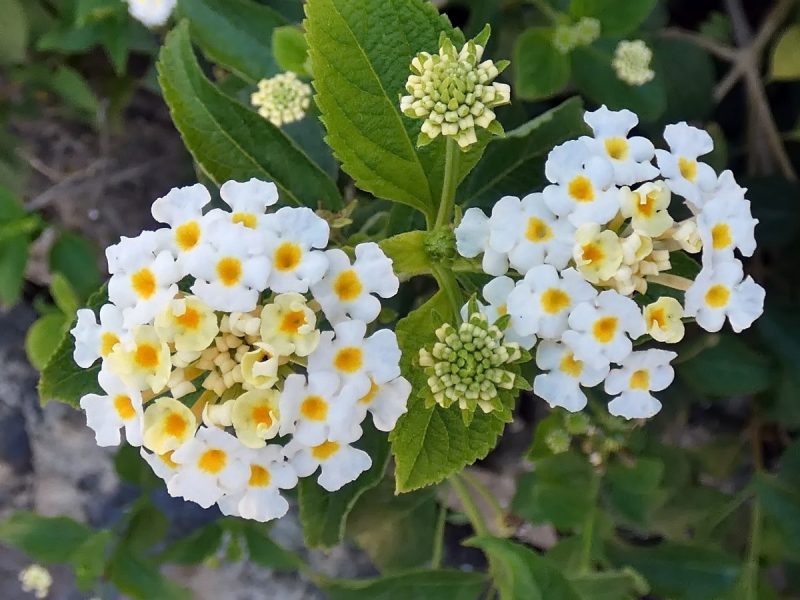
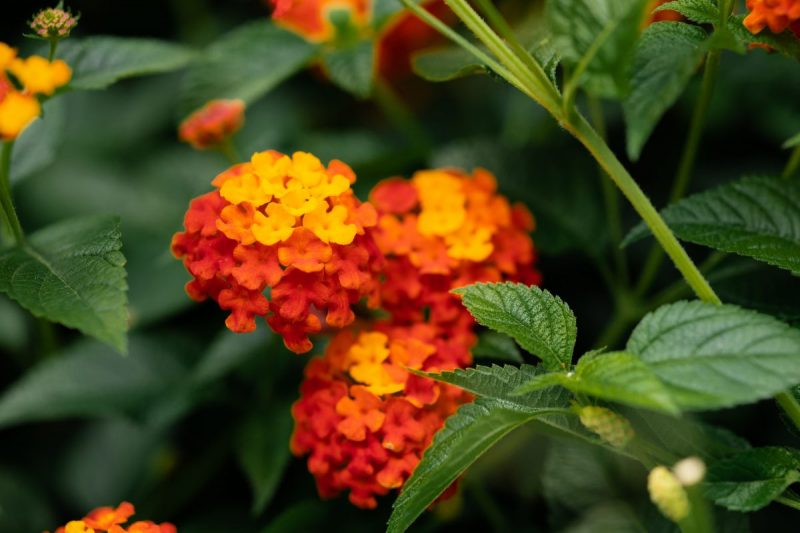
Environmental conditions
Light. It is a light-loving plant. It can also tolerate shade during hot afternoons, but a shaded place negatively influences the flowering capacity.
Temperature. Lantana grows at temperatures above 12 °C. The plants cannot withstand temperatures below 0 °C. During the cold season, it can be sheltered inside, at positive temperatures.
Soil. Lantana camara is not picky in terms of soil/substrate. However, it must ensure good water drainage and have a neutral pH.
Recommended products
-
You can find products on a different store
Change Store -
You can find products on a different store
Change Store -
You can find products on a different store
Change Store -
You can find products on a different store
Change Store -
You can find products on a different store
Change Store -
You can find products on a different store
Change Store -
You can find products on a different store
Change Store -
You can find products on a different store
Change Store -
You can find products on a different store
Change Store -
You can find products on a different store
Change Store -
You can find products on a different store
Change Store -
You can find products on a different store
Change Store -
You can find products on a different store
Change Store -
You can find products on a different store
Change Store -
You can find products on a different store
Change Store -
You can find products on a different store
Change Store -
You can find products on a different store
Change Store -
You can find products on a different store
Change Store -
You can find products on a different store
Change Store -
You can find products on a different store
Change Store -
You can find products on a different store
Change Store -
You can find products on a different store
Change Store -
You can find products on a different store
Change Store -
You can find products on a different store
Change Store
Care – Lantana camara
Watering. It needs moderate watering, so that the soil/substrate does not dry out completely. Watering must be done at the base of the plant, to keep the foliage dry.
Fertilizing. Lantana grown outdoors can be fertilized in spring, at the beginning of the growing season. In the case of plants grown in flowerpots/containers, since the nutrients are limited, fertilizing can be carried out regularly, using balanced fertilizers.
Recommended products
-
You can find products on a different store
Change Store -
You can find products on a different store
Change Store -
You can find products on a different store
Change Store -
You can find products on a different store
Change Store -
You can find products on a different store
Change Store -
You can find products on a different store
Change Store -
You can find products on a different store
Change Store -
You can find products on a different store
Change Store -
You can find products on a different store
Change Store -
You can find products on a different store
Change Store -
You can find products on a different store
Change Store -
You can find products on a different store
Change Store -
You can find products on a different store
Change Store -
You can find products on a different store
Change Store -
You can find products on a different store
Change Store -
You can find products on a different store
Change Store -
You can find products on a different store
Change Store -
You can find products on a different store
Change Store -
You can find products on a different store
Change Store -
You can find products on a different store
Change Store -
You can find products on a different store
Change Store -
You can find products on a different store
Change Store -
You can find products on a different store
Change Store -
You can find products on a different store
Change Store
Propagation. Lantana camara can be propagated by seeds or cuttings.
The seeds can be sown indoors with approx. 3-4 months before the last spring frost. Once sprouted, the new plants can be transplanted into a larger flowerpot. Before moving them outside, a slight acclimatization is necessary.
Propagation by cuttings is practiced when you want the new plant to keep the characteristics of the mother plant. It can be carried out in spring or summer.
Dormancy. In areas with a colder climate, Lantana camara is grown in flowerpots. Once the temperature drops, they can be moved to sheltered places, in unheated spaces, with indirect light and reduced watering, to keep them in a state of dormancy. With the arrival of spring, the plants can be moved (gradually) outside.
Pruning. Plants grown in flowerpots do not require regular cuts, except for maintenance. Pruning can be done in early spring and consists in removing damaged, dry or wrongly grown branches. It is also recommended to remove the wilted flowers, to encourage flowering.
In the case of plants grown in the garden (in regions with a warmer climate), a “rejuvenation” pruning can be carried out, whereby the plants are shortened to a height of 15-35 cm above the ground. These cuts have the role of encouraging branching and flowering.
Recommended products
-
You can find products on a different store
Change Store -
You can find products on a different store
Change Store -
You can find products on a different store
Change Store -
You can find products on a different store
Change Store -
You can find products on a different store
Change Store -
You can find products on a different store
Change Store -
You can find products on a different store
Change Store -
You can find products on a different store
Change Store -
You can find products on a different store
Change Store -
You can find products on a different store
Change Store -
You can find products on a different store
Change Store -
You can find products on a different store
Change Store -
You can find products on a different store
Change Store -
You can find products on a different store
Change Store -
You can find products on a different store
Change Store -
You can find products on a different store
Change Store -
You can find products on a different store
Change Store -
You can find products on a different store
Change Store -
You can find products on a different store
Change Store -
You can find products on a different store
Change Store -
You can find products on a different store
Change Store -
You can find products on a different store
Change Store -
You can find products on a different store
Change Store -
You can find products on a different store
Change Store
Diseases and pests
Lantana camara can be affected by powdery mildew. Among the pests, the most common are wooly apple aphids, whiteflies, aphids, mites.
Additionally:
- The flowering period is from summer to autumn (until the first frost);
- Lantana camara is not a good houseplant. It thrives outdoors, as an annual or perennial plant, depending on the area;
- Lantana camara is toxic to humans and animals.















































































































































































































































































































































































































































